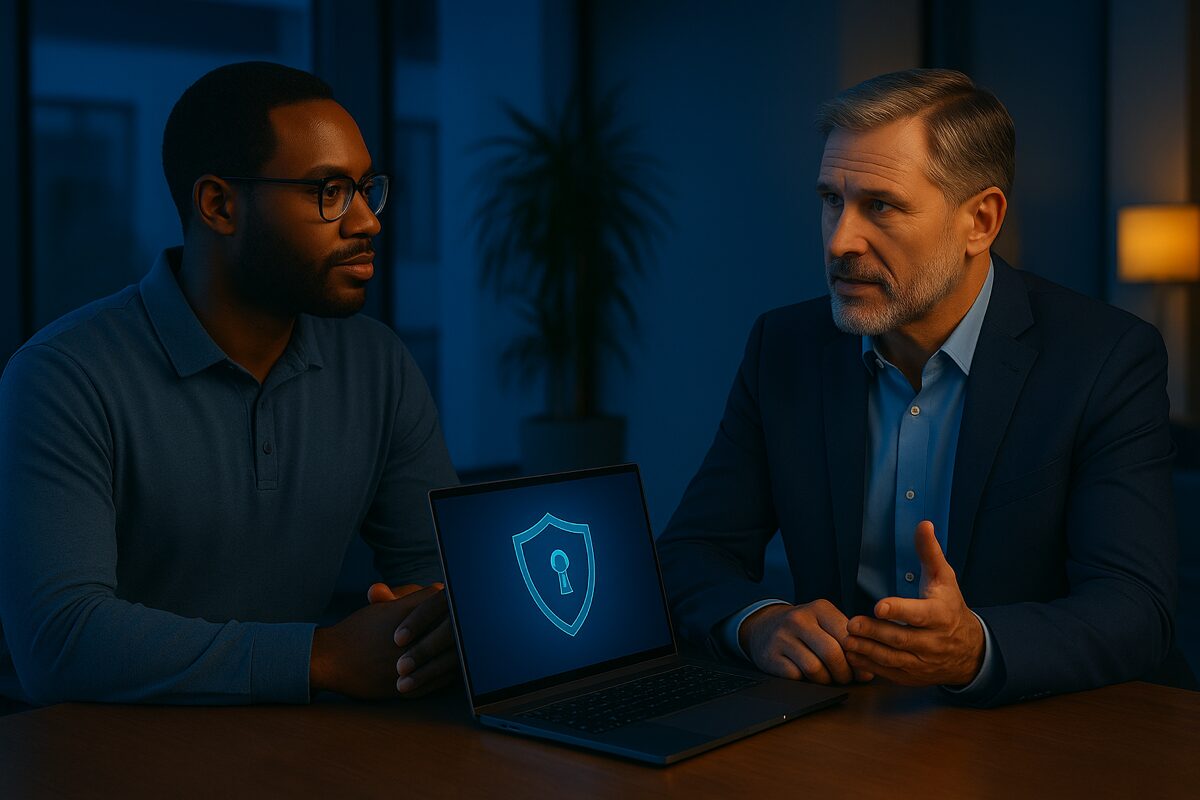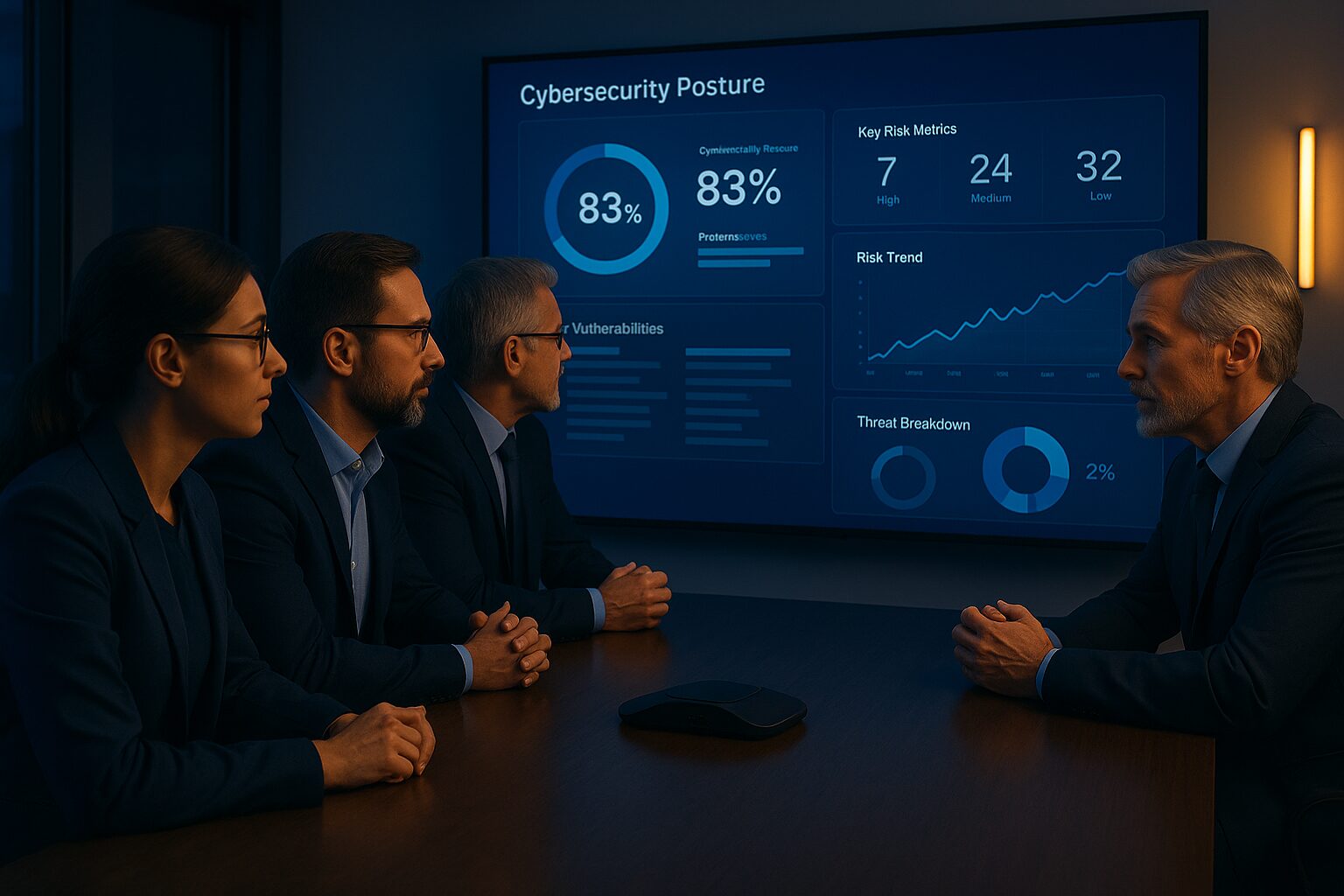Cybercrime is gaining momentum and if you are not fully confident in your security posture, it may be worth taking some steps to fortify your defenses. This article will detail the top 10 cybersecurity vulnerabilities organizations face in today’s digital age.
Emerging Cyber Threats
Protecting your company’s systems and sensitive data from unauthorized access and potential misuse is essential to protect your customers and prevent damage to your corporate reputation. For most businesses, developing an understanding of the most common cybersecurity vulnerabilities can reduce the risk of data breaches and attacks by cybercriminals. This can provide added protection for sensitive information and allow your company to maintain robust security for proprietary corporate information, vendor files, and customer data.
Identifying and implementing the right strategies to protect your servers, systems, user accounts, and networks is vital to your ongoing success. This list of the top 10 cybersecurity vulnerabilities can help you identify risks that could affect your company’s operations and leave you open to attacks by threat actors in the online environment.
1. Misconfiguration of Authentication and Cybersecurity Mechanisms
The Open Worldwide Application Security Project, more commonly referred to as OWASP, offers open source information for businesses in addressing cybersecurity vulnerabilities and identifying potential threats to their server frameworks, web applications, and access controls. Security misconfigurations and broken authentication software are two of the most critical vulnerabilities included in the OWASP Top Ten list of application security risks for 2021. Left unaddressed, these issues can allow cybercriminals to gain access to your corporate systems and sensitive information.
Misconfiguration of your user accounts, authentication systems, and session management tools can leave your company vulnerable to a variety of data and security breach events that may include brute-force or credential-stuffing attacks, denial-of-service attacks, and other attempts by hackers to exploit security vulnerabilities in your operating systems and servers. Making sure that network access systems are configured correctly to use proper validation and multi-factor authentication will prevent many data breach incidents before they take a toll on your company’s reputation and profitability.
2. Failure to Address Known Vulnerabilities and Identify Security Risks
Software and systems that have not been properly updated or that have known security vulnerabilities are often prime targets for cybercriminals. Addressing issues with security during initial software development or planned upgrades and patches is usually the most practical way to minimize cybersecurity threats to software systems, API integrations, access systems, and firewalls.
Zero-day exploits are an ongoing threat in the modern cybersecurity environment. These cyber threats are dangerous because they remain unidentified and unaddressed by corporate IT departments until hackers find and exploit them. Zero-day attacks often cause significant damage to companies that are unprepared for these events.
3. Social Engineering and Phishing Attacks
Failing to educate your staff about best cybersecurity practices can result in serious threats to your company’s future. Phishing and social engineering attempts generally involve using false or misleading information to fool company employees into revealing confidential information or providing access to sensitive information and corporate systems. Phishing is a serious threat to organizations that do not provide training for staff members about these types of attacks.
Informing your employees about potential forms of phishing and new types of social engineering attacks can prevent many instances of unauthorized access to confidential information. Working with a company that specializes in cybersecurity education can often be a practical step in the right direction when training staff to avoid social engineering and phishing emails and websites in the corporate environment.
4. Ransomware and Malware Attacks
Implementing robust protections against malware and ransomware is essential to manage threats to your organization. Some of the most common malware attack strategies are listed here:
- SQL injection attacks occur when users insert malicious code in response to requests for input. For example, your database may request login information from user accounts. Rather than providing that information, the user may instead enter an SQL command that will allow unauthorized access to information stored in your company’s databases.
- Cross-site scripting attacks are also known as XSS attacks. These direct attacks focus on a vulnerability in your website design to inject malicious code into the site, which can then deliver malware to site users. This can result in your website being labeled as untrustworthy and affect your corporate reputation.
- Ransomware, as its name suggests, is the holding of corporate data for ransom by encrypting it and demanding payment for the encryption key needed to restore that data to a usable form. Ransomware infections often occur after a staff member clicks on a link in an email or on a website, which then installs the malware to their computer. In some cases, the ransomware may also affect entire servers creating serious issues throughout your organization.
Education is one of the best tools in your cybersecurity arsenal. Along with penetration testing by a qualified firm, training your employees and IT staff to recognize signs of unauthorized access and to avoid clicking on unfamiliar links can often reduce the risks to your company and promote the highest degree of security for your proprietary systems, servers, and confidential data.
5. Endpoint and Mobile Device Vulnerabilities
Mobile devices have become part of the corporate toolset in many organizations. Unfortunately, these endpoints can also represent a new source of common vulnerabilities. Virtual private networks, also known as VPNs, are intended to provide secure access to servers and data resident on those servers from remote locations. However, the serialization and deserialization processes used to encrypt logins and other information transmitted between these devices and the VPN can sometimes be lacking.
Physical security for these endpoints can also be an issue for some companies. The loss of a mobile device can result in a data breach or ongoing unauthorized access to your servers and systems. Failing to put adequate physical security in place in your workspaces can also result in unauthorized individuals gaining access to corporate systems and sensitive data that could be used to damage the company’s reputation in the public marketplace.
6. Failure to Implement Cybersecurity Best Practices
Updating user accounts immediately upon an employee’s separation from your company is essential to prevent them from using their credentials to access sensitive information residing on your servers. Broken access control attacks are often the result of insecure user IDs, improper client-side caching of webpages, and improper assignment of permissions and privileges to user accounts.
Minimizing the attack surface of your systems is a practical way to provide better protection against cyber attacks. Your system attack surface comprises all the points at which access is possible to your systems. By reducing the number of these points, you can concentrate your cybersecurity measures on a smaller area and promote a safer environment for your data and those who access it.
7. Exposure Through Third-party Apps and Systems
If your organization partners with other networks and vendors, you may be at risk of unauthorized access and data breaches caused by your company’s relationship with third-party systems. Independent contractors who work with your company to provide services or deliver goods to your organization are often granted access to systems they need to meet their contractual obligations. Unfortunately, this access can also present an attractive target for hackers and cybercriminals who can use these relationships as a way of gaining access to your data.
The risks are even higher if your company uses third-party applications to facilitate remote work for staff members. Analyzing and maintaining high security standards for all types of third-party applications and access points can allow your company to manage its risks much more effectively.
8. Vulnerabilities in Connected IoT Systems and Devices
One often-overlooked aspect of ensuring security for servers and systems is the prevalence of IoT systems in the corporate environment. These devices, appliances, and systems connect to networks directly, which makes them a favored target for hackers. However, establishing robust security standards can be challenging when dealing with IoT devices. For many companies, outsourcing these security issues to a firm that specializes in managed IT and security solutions can be a practical way to deal with the security gaps sometimes caused by IoT devices.
9. Cloud Cybersecurity Vulnerabilities
Cloud technologies make it easier for customers and staff members to access the information they need quickly and efficiently. Without proper protection, however, data stored in the cloud could be at risk of loss or intrusion by unauthorized individuals. This also applies to applications used by your staff members and customer interfaces.
Outsourcing your cloud IT activities provides you with the necessary expertise to protect your data and apps from unwanted access. Firms that specialize in online security can provide you with expert guidance on addressing cloud cybersecurity vulnerabilities and preventing incidents that could impact your profitability and public reputation.
10. No Plan for Preventing and Addressing Cyber Attacks
Establishing a plan for the mitigation of data breaches and other cyber attacks is essential to protect your company from permanent damage to its reputation and to prevent some of the most serious issues that can result from these events. Creating a comprehensive program that addresses all the most common threats to your data and online security can be challenging, especially if you lack in-house expertise in this field.
For many companies, working with an experienced and knowledgeable team of IT experts can produce a framework within which data can be protected, and security breaches can be prevented. Meriplex can identify and address security concerns throughout your organization. If you need help in securing networks and data, our team has the proven experience and expertise needed to keep your systems safe and secure.
Managing the Top 10 Cybersecurity Vulnerabilities With Meriplex
At Meriplex, we offer practical solutions for each of these issues. Our team is committed to delivering the options you need to address security vulnerabilities throughout your organization. We offer services that address all of the top 10 cybersecurity vulnerabilities and threats to your organization:
- Ensuring proper configuration of cybersecurity measures: Meriplex has the expertise and experience your company needs to configure your systems for optimal security. We can perform penetration testing and assessment of your current security measures and alert you to any existing security misconfigurations or vulnerabilities. This can allow you to take proactive steps to protect data and secure your systems against known and unknown security threats.
- Addressing known vulnerabilities and zero-day exploits: Taking action to protect your data against known and unknown threats can be challenging. Meriplex can help with proactive and practical solutions to safeguard your data and keep your business operating smoothly and securely.
- Educating staff about phishing and social engineering: The right training is essential to reduce the chance that social engineering attacks will impact your productivity and profitability. Our team can provide you with the right educational programs to reduce risks to your infrastructure and your corporate reputation.
- Blocking ransomware and malware attacks: The right approach can reduce the risks of ransomware attacks and malware infections throughout your network. At Meriplex, we can provide recommendations and support that will provide your company with the best possible security.
- Managing endpoint and device security: Maintaining an inventory of endpoints and mobile devices that connect to your networks or server framework is the first step in managing access to your data. Meriplex also offers physical security solutions to prevent unauthorized access to your data inside your facilities.
- Implementing best practices: Our team can help you create a plan that is tailored to suit your needs, compliance requirements, and the biggest cyber threats your company faces now and in the future.
- Vetting third-party apps and access: Meriplex can also identify issues with third-party applications that could leave holes in your security configuration.
- Managing IoT devices and systems: We have proven expertise in creating secure IoT connections for our customers.
- Safeguarding the cloud: Cloud computing offers unique challenges to modern companies. Meriplex can help you establish a cloud computing solution that balances the need for easy and immediate access with protection for data stored in remote servers and accessed through the cloud.
- Implementing remediation and mitigation plans: What you do after a data breach can affect your company’s reputation for years to come. Meriplex can help with proactive strategies that can be implemented immediately to reduce the harmful effects of data breaches.
If you need professional assistance in identifying and managing security vulnerabilities, contact Meriplex today to schedule a consultation with our friendly and knowledgeable IT team. We are here to help you survive and thrive in the modern business environment.



